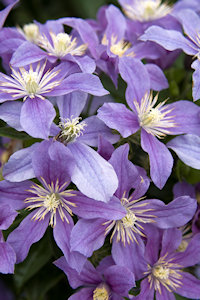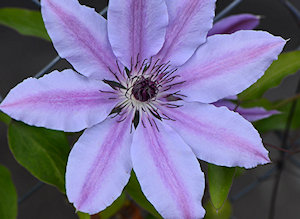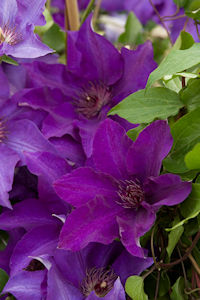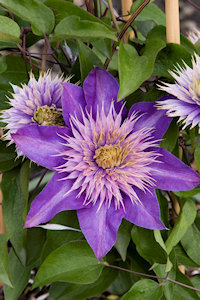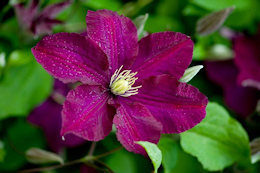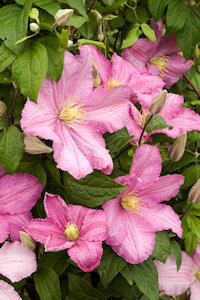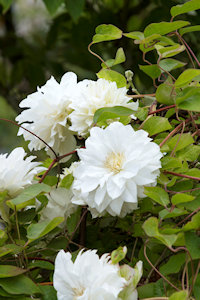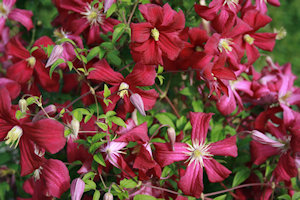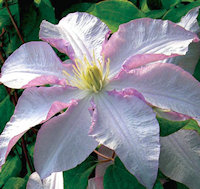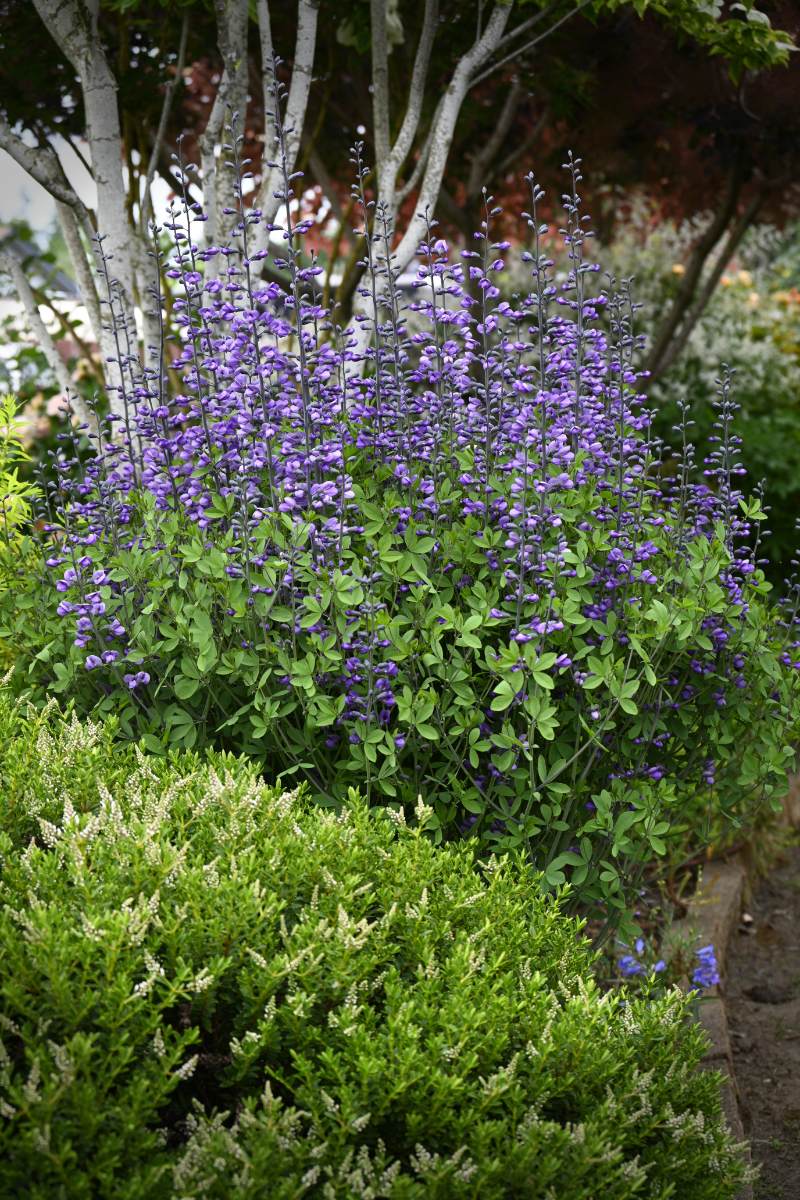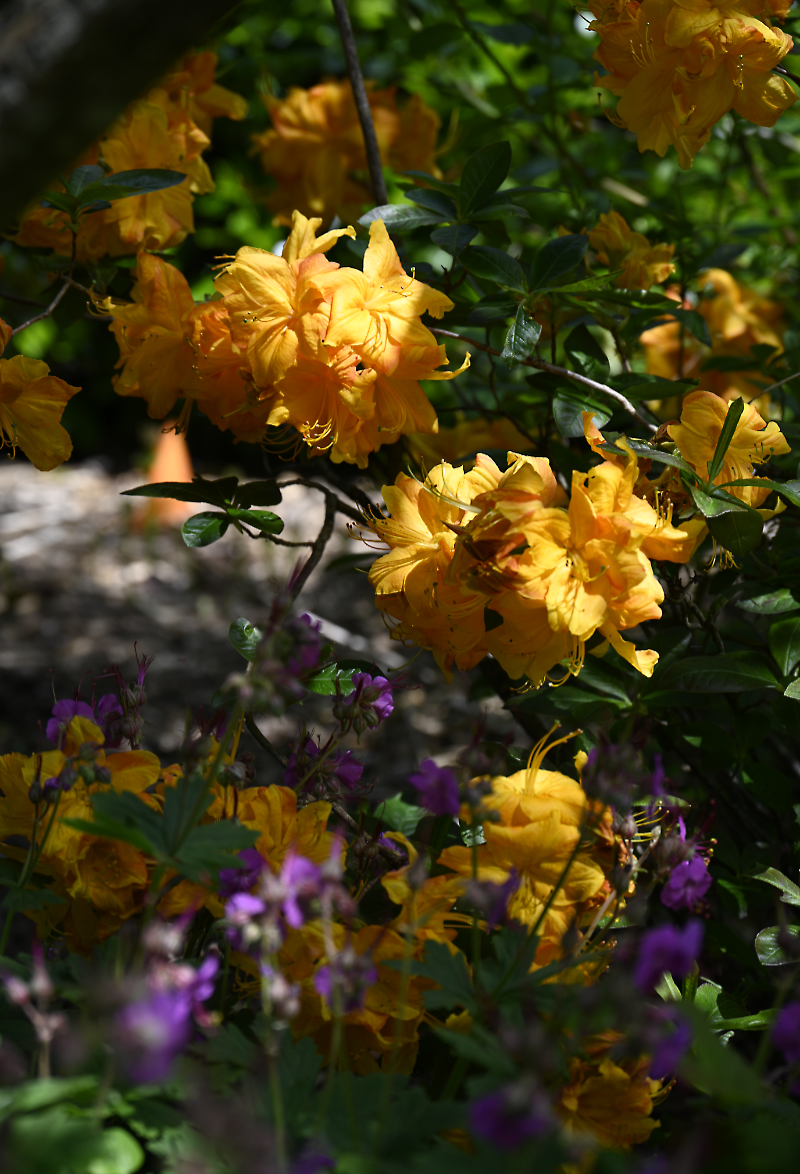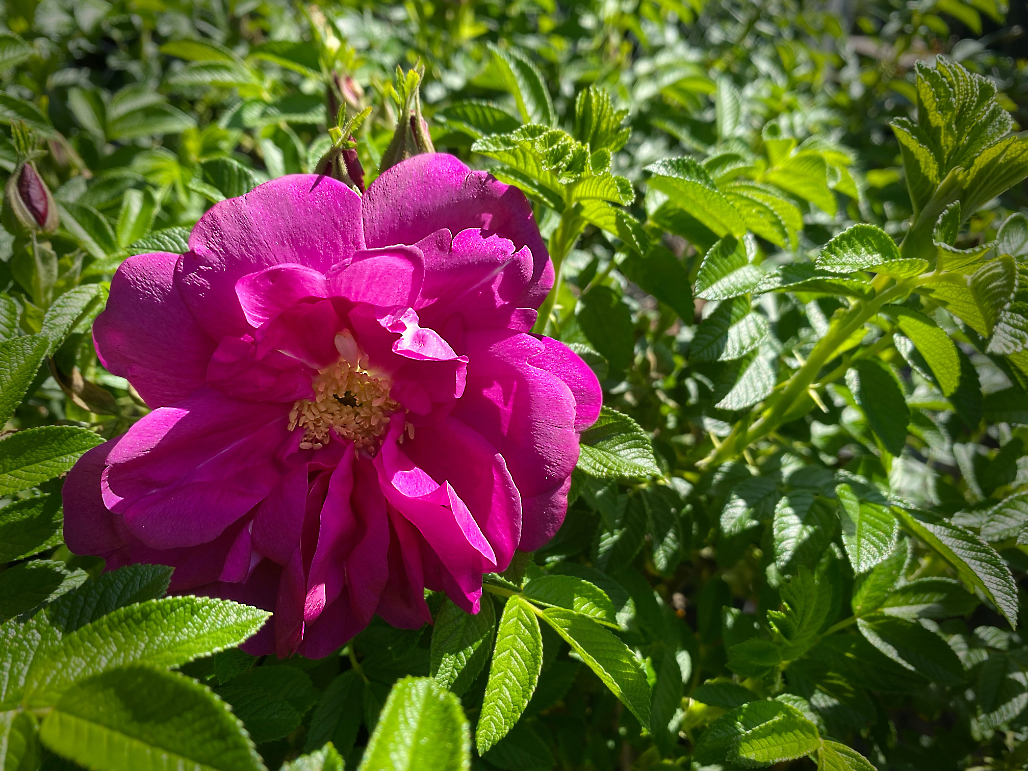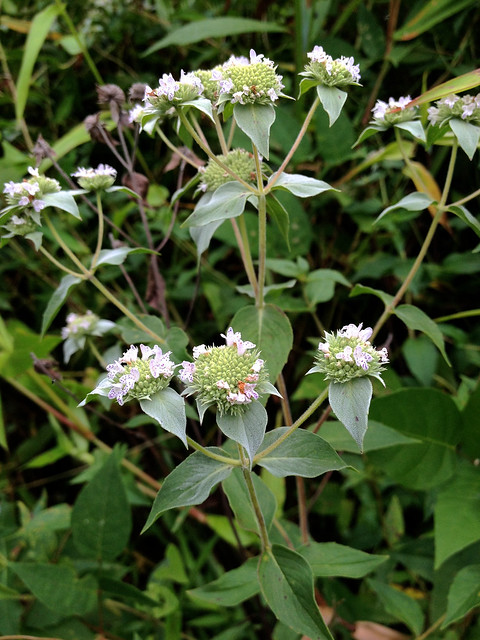Clematis
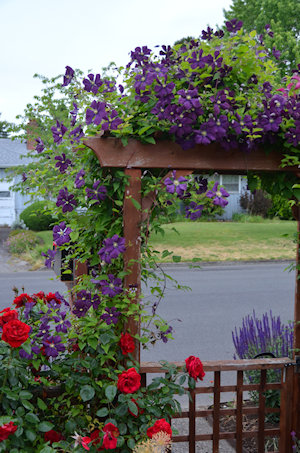 Clematis has been called “The Queen of Vines” and with good reason. A fence or garden arbor clothed in clematis blooms is an unforgettable sight. These vines prefer a sunny location (although partial shade is fine too) in well-drained soil. In addition to adorning walls and fences, they made excellent scramblers for growing among roses, large shrubs and even trees.
Clematis has been called “The Queen of Vines” and with good reason. A fence or garden arbor clothed in clematis blooms is an unforgettable sight. These vines prefer a sunny location (although partial shade is fine too) in well-drained soil. In addition to adorning walls and fences, they made excellent scramblers for growing among roses, large shrubs and even trees.
Tips for growing clematis –
- Before planting, submerge the container in a bucket or tub of water until the air bubbles stop. This will ensure that the plant is totally saturated.
- Clematis usually come in pots that have a stake stapled to it to help support the vine. Carefully removed the staples from the pot with wire pliers, knife or screwdriver. Clematis are delicate vines and they break easily. Be patient when removing them from their pots.
- The planting hole should be at least 18 inches deep (deeper is even better) and at least twice the width of the pot. Mix in some compost as well as 1/2 cup of bone meal or organic flower fertilizer and mix with your native soil.
- Prune the clematis to about 15 inches. This will reduce transplant shock. It is difficult to do, especially if the vines already have flowers or buds, but your plant will get off to a better start.
- Plant at the same level as the pot (large flowered varieties can actually be planted a few inches deeper).
- Backfill with your soil and gently tamp it down. Water well and continue to water every 4-5 days if there is no rainfall. After growth has started, one weekly watering should be adequate.
- Clematis like their roots to be cool. Using other plants around their base is a good idea (ground covers or annuals are recommended). You can also place rocks or broken pieces of pottery to help shade them.
- Clematis need a support to climb on – use strings or wire to help them reach their destination.
- Pruning always brings questions as different types of clematis are pruned differently. Most large-flowered types can be cut back to about 12 inches in February before new growth begins. Also, after their first flowering, cutting them back halfway will encourage more flowers later in the season. Consult a guide or the Internet for pruning a specific variety.
Some of the currently available clematis at Yard N’ Garden Land include:
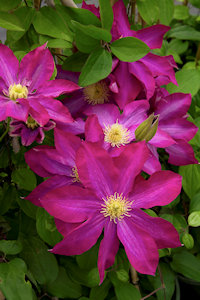
Pink Champagne – A compact (6-8 ft.) plant featuring vibrant pink blooms with white bars. It blooms in late spring to early summer and again later in the season. (Photo courtesy Monrovia)
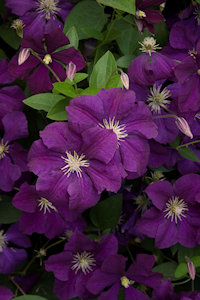
Etoile Violette– Deep purple with gold tufted centers. 8-12 ft. Good for covering large spaces. (Photo courtesy Monrovia)

